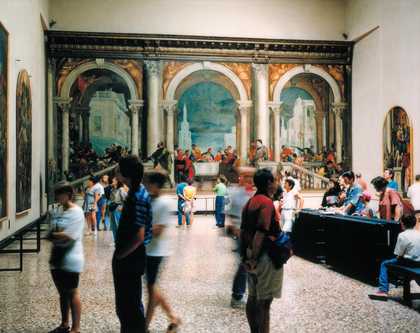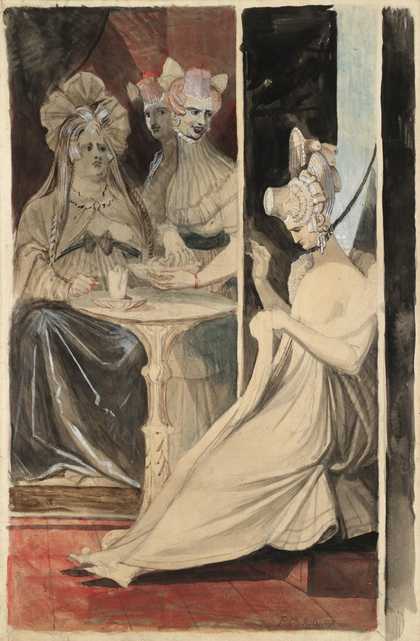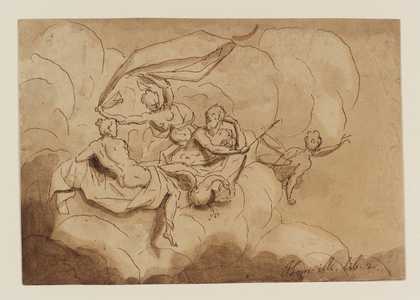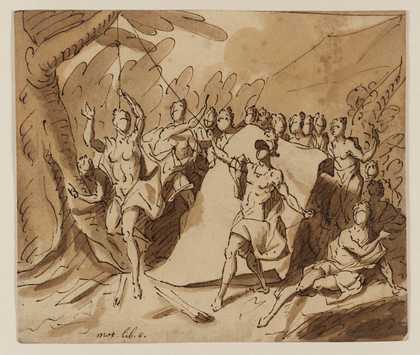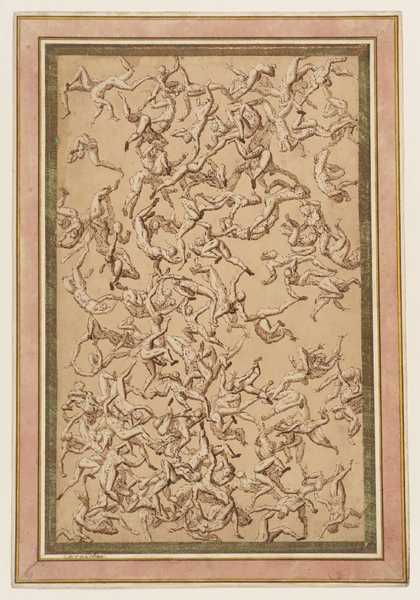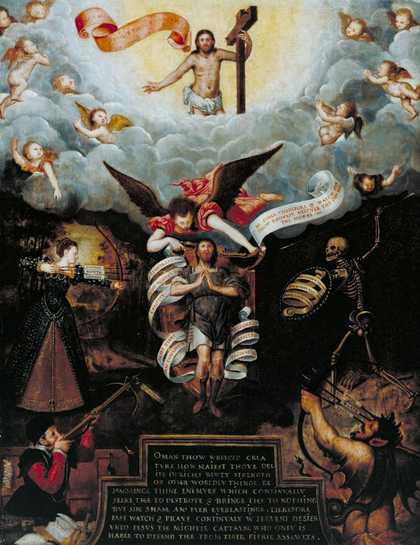
Unknown artist, Britain
An Allegory of Man (1596 or after)
Tate
Mannerism is the name given to the style followers of Raphael and Michelangelo from around 1520–1600. Mannerist artists were influenced by, but also reacted to, the work of the Renaissance masters. Rather than adopting the harmonious ideals associated with Raphael and Michelangelo, they went a step further to create highly artificial compositions which showed off their techniques and skills in manipulating compositional elements to create a sense of sophisticated elegance.
Mannerism spread all over Europe, and in Britain the elegant artificiality of Elizabethan court painting can be seen as an echo of it. It also influenced later artists such as Henry Fuseli.

